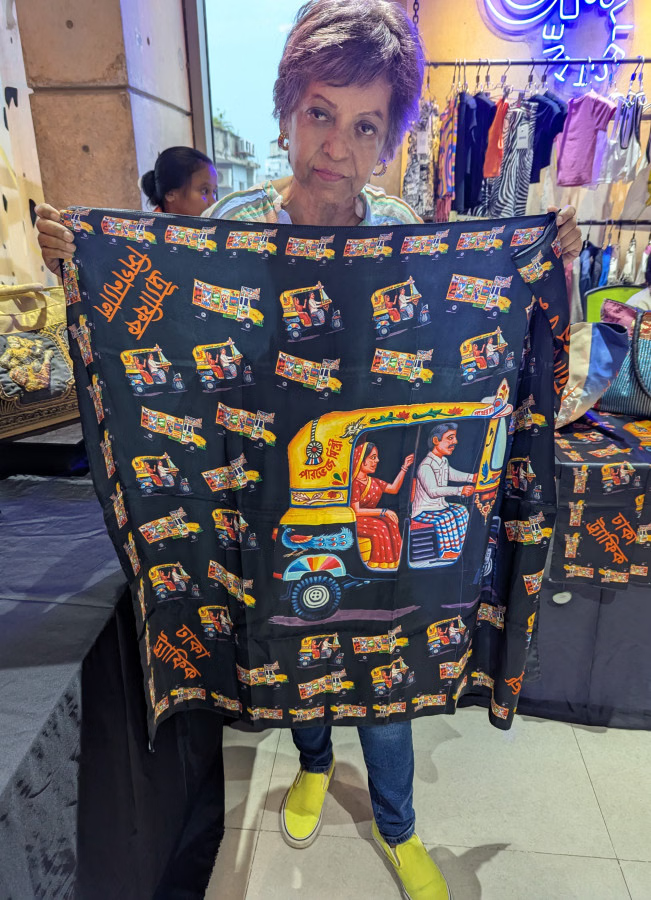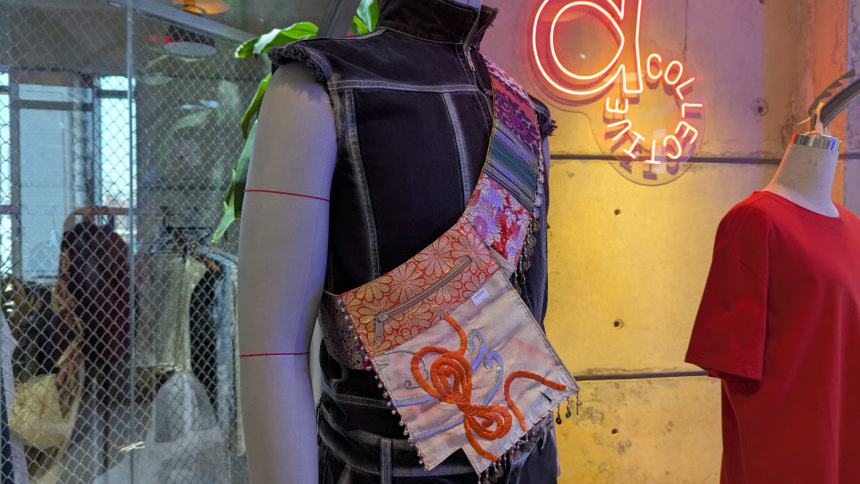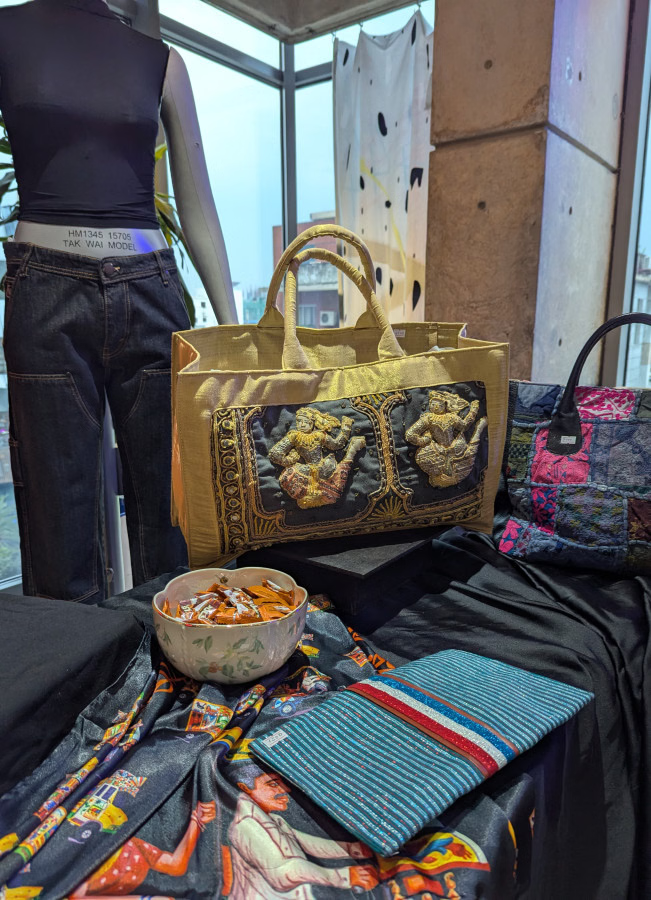October 15, 2025
DHAKA – There are exhibitions you walk into and leave, and then there are ones that stay with you, not because of scale or spectacle, but because they make you feel. Kuhu Plamondon’s “Bags as Wearable Art” at Arka Collective in Banani belonged to the latter. On Saturday, 10 October 2025, the exhibition felt like more than an event — it was a unique affair where even the air seemed a bit textured, like the very fabrics that inspired her work.

At first glance, the display looked like a series of beautiful bags. They were bold, colourful, and somewhat distinct. However, when we looked closer, each one began to tell a story. Torn saris, worn-out tablecloths, old blouses, leftover leather scraps, pieces of kimono, and tribal clothes from the Hill Tracts were all stitched together, reborn as art in the form of bags.
“I’ve always been drawn to what’s broken or half-used,” said Kuhu. “I think there’s an honesty in things that have lived a life before. They carry a kind of quiet beauty that new things simply don’t.”
Her collection is not about pristine perfection. It is about emotion, texture, and memory.

“For me, creating is like building a collage,” she explained. “I don’t plan it; I let the materials guide me. Sometimes, a piece of fabric tells me exactly what it wants to become. I just listen.”
That instinctive approach gave birth to twenty unique bags, no two alike. One was made from a tin box painted with pop art, another from an old sweater that still seemed to hold warmth. A warrior vest–inspired piece, which she insisted on including, reflected her deep fascination with nomadic cultures. She also showed a scarf called Dhaka Traffic, printed with baby taxis where women navigate from the backseat while men drive.
“It’s funny but true,” she said, smiling. “Men might be driving, but it’s the women who are really steering things. We’re always navigating — through traffic, through life.”
While many Bangladeshi artists find their muse in the rural landscape, rivers, fields, and village life, Kuhu looks to the city. Its rawness, noise, and contradictions shape her art.
“I think something of life is really meaningful to me,” she said softly.

“I’m an artist from Charukala,” Kuhu added. “I have a master’s in painting and drawing. Fashion was always something I wanted to do. I started creating my own textiles because somehow the ones that got into the market never appealed to me. So, I began to take my art into textiles, and I called it wearable art.”
Her works indeed blur the line between art and utility. “I also like anything functional,” she explained. “Think about architecture, the grandest of all arts, or pottery, which we use every day. Art evolves, and so does architecture, and so do textiles. Over time, it takes new forms, new beauty. Even jewellery — it’s art that you wear.”
Kuhu’s fascination with bags, however, feels almost psychological.
“I was always intrigued by bags,” she said. “We stuff things in them. It’s almost like we’re stuffing emotions and our everyday needs into them. If you notice, when we walk, we all have an angle of how we carry our bag — it denotes something; it shapes our mind and our body. This is why I find it meaningful to create something we carry so much in our lives.”
Beyond the craftsmanship, her collection also spoke of memory and sustainability. In an age of fast fashion and disposable design, her bags urged a slower gaze, one that values repair, reuse, and reflection.

“A bag is never just a bag,” she said. “It holds not just money or make-up, but memory, emotion, small pieces of our day. Women especially know this truth. We carry our lives inside these bags, our chaos, our care, our comfort.”
Through this collection, Kuhu reminds us that sustainability can be poetic. Her art does not preach; it invites. She somehow gave chaos a second chance and beauty a second life, all through her bags.


